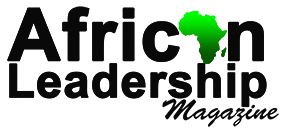Across the globe, manufacturing drives economic growth, shaping nations and lifting millions out of poverty. Yet, the narrative in Africa is that the manufacturing sector is a shadow of its true potential.
According to the World Bank and the International Labour Organisation, manufacturing remains the cornerstone of economic development, contributing nearly 16% to global GDP and employing close to 470 million people worldwide as of 2023. The industrial sector in Asia continues to dominate, with China alone accounting for over 28% of global manufacturing output, an economic feat largely attributed to decades of strategic industrial policy, export-led growth, and investments in infrastructure.
READ ALSO: How Nanotechnology Could Revolutionise Africa’s Manufacturing Sector
The United States and Germany follow closely, demonstrating the power of sustained innovation, skilled labor, and consistent capital injection. Meanwhile, Southeast Asia, specifically Vietnam, Indonesia, and Malaysia, has become a new frontier for global manufacturers seeking to diversify supply chains post-pandemic. These countries have benefited from preferential trade deals, special economic zones, and reforms that have attracted billions in foreign direct investment.
Despite this global momentum, Africa’s share of global manufacturing remains below 2%, a figure that has barely changed in the last two decades. Yet, this underperformance does not signal a lack of potential. Rather, it highlights years of missed opportunities, systemic challenges, and fragmented policy responses. However, the tide is slowly turning, with new investments, regional frameworks like the African Continental Free Trade Area (AfCFTA), and homegrown innovation nudging the continent towards a manufacturing renaissance.
In 2023, Sub-Saharan Africa’s total manufacturing output was approximately $227.25 billion, reflecting a 3.24% decline from 2022, according to Macrotrends. South Africa, Nigeria, and Egypt continue to be the continent’s top manufacturing economies, with South Africa leading due to its advanced automotive and machinery sectors. Still, Africa’s industrial contribution to GDP remains stuck around 11%, far below the 25% threshold recommended by the United Nations Industrial Development Organization (UNIDO) for developing economies seeking to transition to middle-income status.
The African Development Bank (AfDB) projects that industrial GDP must grow by 8% annually for the continent to meet the Sustainable Development Goals (SDGs) by 2030. However, current trends suggest that most countries are growing at a much slower pace, between 3% and 5%. Africa also lags significantly in manufacturing employment, with just 8% of its workforce in the sector, compared to the global average of 23%. Meanwhile, the continent’s share of global manufacturing exports remains negligible, contributing just under 1% in 2023, with most exports being low-value-added goods such as textiles, agro-products, and raw materials.
Ethiopia has emerged as one of the most aggressive African countries in its industrialisation efforts. The Hawassa Industrial Park, launched in 2016 as Africa’s first eco-friendly manufacturing hub, was designed to host over 50 global textile and apparel companies. By 2020, it employed more than 35,000 workers and attracted big-name brands like H&M and PVH (owners of Calvin Klein and Tommy Hilfiger). However, when Ethiopia lost access to the African Growth and Opportunity Act (AGOA) in 2022 due to internal conflict, exports declined, and many factories halted operations. Nevertheless, the park generated over $32 million in revenue between October 2022 and January 2023, signalling its potential for resilience once political stability returns.
In North Africa, Egypt has carved out a niche in chemicals, construction materials, and automotive parts, driven by robust infrastructure like the Suez Canal Economic Zone. The country attracted $10 billion in industrial FDI in 2022, according to UNCTAD. Morocco has made similarly significant strides in automobile manufacturing. Renault’s Tanger Med facility has become one of the largest car production plants in Africa, exporting vehicles across Europe and Latin America. In 2023 alone, Morocco produced over 500,000 cars, with ambitions to scale to one million annually by 2026.
On the western flank of the continent, Nigeria faces a paradox. Despite its large population and market size, its manufacturing capacity remains underwhelming. The sector contributed just 8.2% to Nigeria’s GDP in 2023, hindered by energy insecurity, inconsistent policy frameworks, and heavy reliance on imported machinery and raw materials. Nonetheless, some progress is evident in light manufacturing, agro-processing, and local cement production, with companies like Dangote Cement leading the charge. The new Lekki Deep Sea Port and the 650,000-barrel Dangote Refinery are expected to catalyse local manufacturing by improving infrastructure and reducing import dependence.
Structural Challenges Undermining Africa’s Industrialisation
Africa’s manufacturing struggles can be attributed to several deep-rooted challenges. Chief among them is inadequate infrastructure. According to the World Bank, over 200 million Africans lack access to reliable electricity, making it almost impossible for manufacturers to operate competitively. High logistics costs, often double the global average, further constrain regional supply chains. Additionally, capital flight and weak domestic credit systems restrict funding for small and medium-sized manufacturing firms, which constitute 90% of Africa’s industrial ecosystem.
Another critical issue is the lack of industrial policy coherence. Unlike Asian economies that crafted and followed long-term industrial roadmaps, many African countries suffer from abrupt policy shifts, bureaucratic bottlenecks, and regulatory inefficiencies. This has led to a disconnect between government ambition and actual industrial outcomes. Education and skills gaps also persist, with many technical vocational institutions underfunded and poorly aligned with industry needs.
The AfCFTA and Regional Industrial Growth
The African Continental Free Trade Area (AfCFTA), which came into force in 2021, represents a game-changer. It promises to create the largest free trade zone in the world by connecting 54 countries with a combined GDP of over $3.4 trillion. The United Nations Economic Commission for Africa (UNECA) estimates that AfCFTA could boost intra-African trade by 52% by 2025 and industrial output by over $56 billion. Countries like Rwanda and Kenya are leveraging this momentum. Rwanda, for example, has invested in light manufacturing parks and the Kigali Special Economic Zone, which is attracting investors from Turkey, India, and China. The zone contributed over $100 million in exports in 2023 alone, mainly from garments, pharmaceuticals, and electronics.
Reimagining Made in Africa
Africa’s manufacturing renaissance is not just an economic strategy but a matter of continental destiny. To rebuild its industrial backbone, Africa must address long-standing infrastructure gaps, align policy with a long-term vision, and invest heavily in human capital development. The road ahead is steep, but not impassable. By leveraging regional trade frameworks, fostering political stability, and attracting targeted investment, Africa can transform itself from a raw material supplier into a global hub for value-added production. The continent’s youthful population, abundant natural resources, and growing middle class present a unique opportunity to reshape the narrative, from “Made for Africa” to proudly “Made in Africa.”




